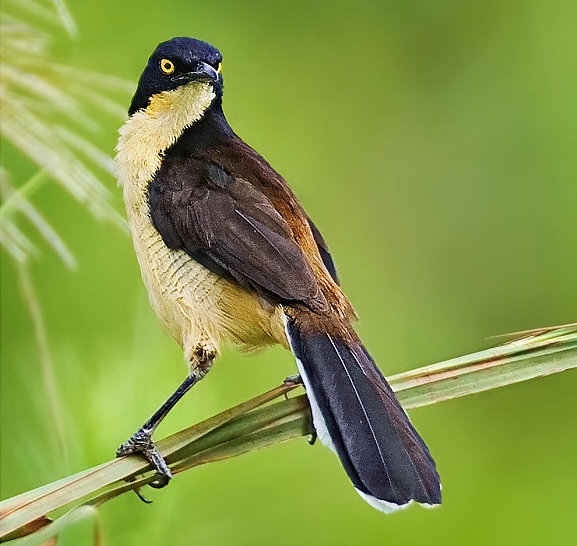 |
| Photo by Ralf Lukovic (Trek Nature) |
Common name:
black-capped donacobius (en); japacanim (pt); donacobe à miroir (fr); angú (es); rohrspotter (de)
Taxonomy:
Order Passeriformes
Family Troglodytidae
Range:
This species is found in northern South America, from Venezuela south to Bolivia, southern Brazil and north-eastern Argentina.
Size:
These birds are 23 cm long and weigh 24-30 g.
Habitat:
The black-capped donacobius is mostly found in inland wetlands, such as freshwater marshes, bogs, swamps, rivers, streams and oxbow lakes with tall dense aquatic or semi-aquatic vegetation, as well as in moist scrublands. They occur from sea level up to an altitude of 600 m.
Diet:
They feed on insects.
Breeding:
Black-capped donacobius are territorial and can breed cooperatively with the offspring from previous years helping the adults tend the eggs and chicks. The nest is a cup made of dry grasses and reeds, interwoven with spider webs and attached to tall grasses or reeds, usually near water. There the female lays 2-3 pale rust-coloured eggs, which are incubated for 16-18 days. The chicks fledge 16-18 days after hatching.
Conservation:
IUCN status – LC (Least Concern)
This species has a very large breeding range and is described as common. The population trend is difficult to determine because of uncertainty over the impacts of habitat modification on population sizes.







